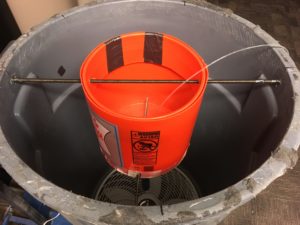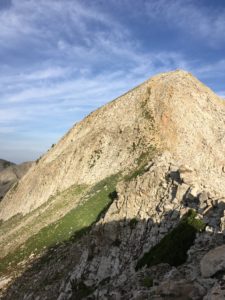I cannot believe I only have one week of my internship left. To start the fifth week we continued trials of our CO2 bucket experiment. For the set of trails this week we used a trash can with the bottom removed instead of a five-gallon bucket. This is done to see if the difference between the expected value we get from the scale and the calculated value we get from the velocity and concentration data varies with the size of the bucket. The experiment was difficult as each trial lasted about 30 minutes. Also, Aaron, who we are working with on this experiment, processed the data from our experiments we did the previous week. Next week we will get an introduction to the basics of data processing. Our data from that week showed a significant difference in the mixing CO2 between the two 5 gallon buckets stacked on top of each other and one five gallon bucket. The concentration of CO2 was much more even at top of the two 5 gallon buckets because the CO2 had more time to mix. We also learned that our calculated values were within five percent of our expected values. This means that this method should work for measuring the mass of CO2 leaving the vent on the roof of the union. For our large bucket trials, we have begun to place a secondary CO2 sensor in the room where the experiment is carried out because the release of CO2 into the room raises the concentration of ambient CO2 in the room. This leaves us unable to use a generic ambient value of CO2 in the calculations. This ambient value is used as a correction in the data processing to ensure we are only counting the CO2 leaving the tank in the bucket.
With our Arduinos we have also been making progress. This week another Xbee transmitter was delivered and we can now daisy chain together the Arduinos with their Xbee transmitters to reach from the office where we work to the union. A CO2 sensor compatible with Arduino was also delivered. We had some initial difficulty connecting it to the board, but when we finally got it connected it would not give us an accurate reading. We are still investigating how to set-up this sensor properly.
On Wednesday, we had the opportunity to present to the entire CSER group the work we have been doing since we started our internship. This was helpful as the group gave us suggestions on everything we have been working on and how to proceed with our work in our remaining time.
This Saturday I hiked Pfeifferhorn and last weekend I saw Sorry to Bother You with my parents.



There are no comments published yet.